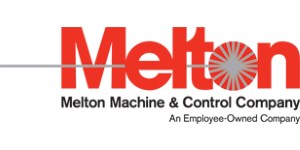Multi-Robot Systems and Robot Supplier for flexible OLP Solution
FASTSUITE brand-agnostic simulation and offline programming (OLP) software allows a system integrator to substitute different robot brands when supply chain shortages cause long lead times. The software’s powerful simulation tools help prove out complex automation concepts upfront and eliminate rework later. Cost savings yield a strong return on investment.
About the customer
Melton Machine & Control Company

Melton Machine & Control Company is an established leader in automated arc welding systems. With 50-plus years of experience designing and building premium-quality, value-focused equipment and fixtures, the system integrator is trusted by its partners around the world to develop precise, efficient solutions for factory automation.
Business challenge

Customer goals
Innovation
Require simulation and offline programming software platform able to handle fully coordinated motion of multi-robot cells, workpiece positioners and external axes.

Do you have similar challenges? Talk to our team.Contact here
Approach
Melton Machine is using FASTSUITE Edition 2 Advanced Integrator software, which enables everything from concept planning, cell layout and simulations, to robot reach studies, cycle time estimation and offline programming.
The Advanced Integrator package also allows for digital twinning of custom-designed part fixtures, including modeling behavior of clamps and part proximity sensors.
An exact geometry, Parasolid based CAD kernel allows users of FASTSUITE software to exchange tooling and even whole cell layout data with external CAD systems, without losing that valuable project data while programming parts using true curves or surfaces, instead of tessellated or split segments, which are common with other software.
CENIT’s software reduces programming time by using automated weld seam search and torch angle orientation strategies, thus avoiding tedious point-by-point programming.
FASTSUITE software provides accurate 3D process simulation, including collision detection and avoidance, axis limits, and singularity monitoring, saving Melton Machine the time and cost of rework.
In a nutshell:
- FASTSUITE Edition 2 Advanced Integrator software
- A sleek, compact program with a minimal number of points, which is easier to use
- An extensive library of nearly 800+ robot arms from all major manufacturers






